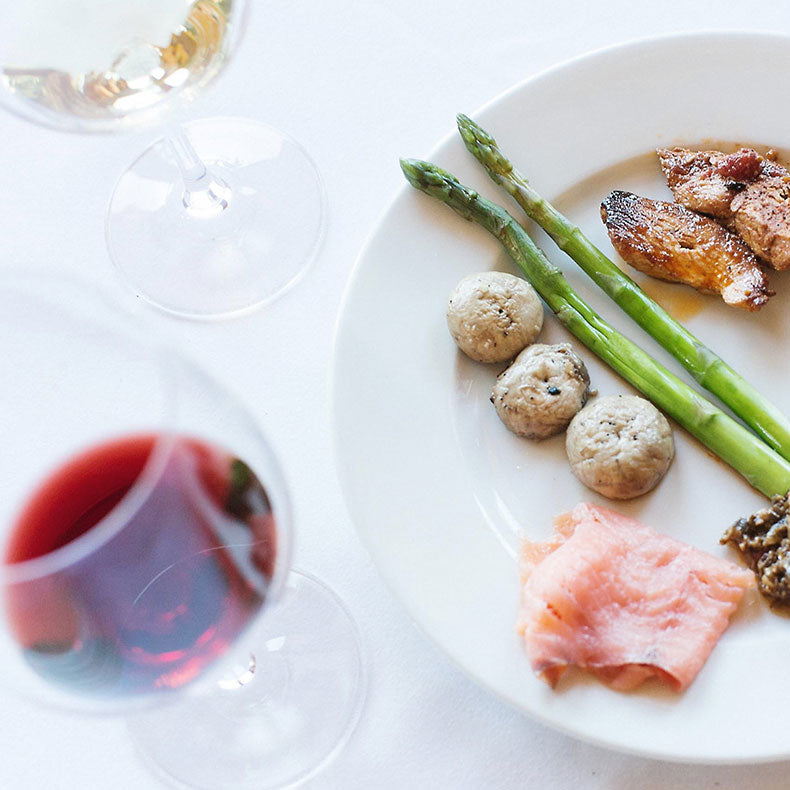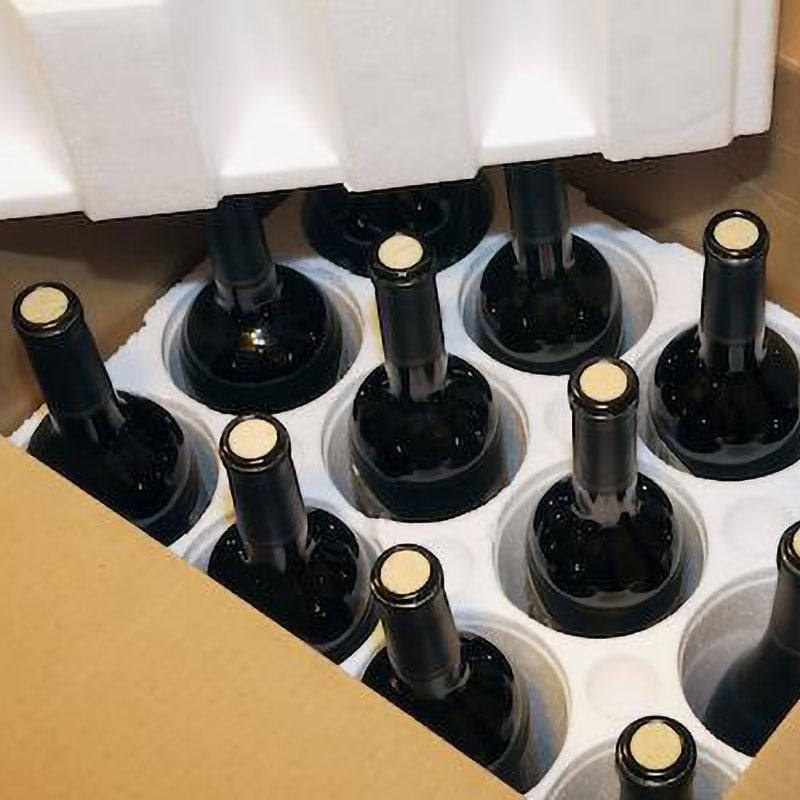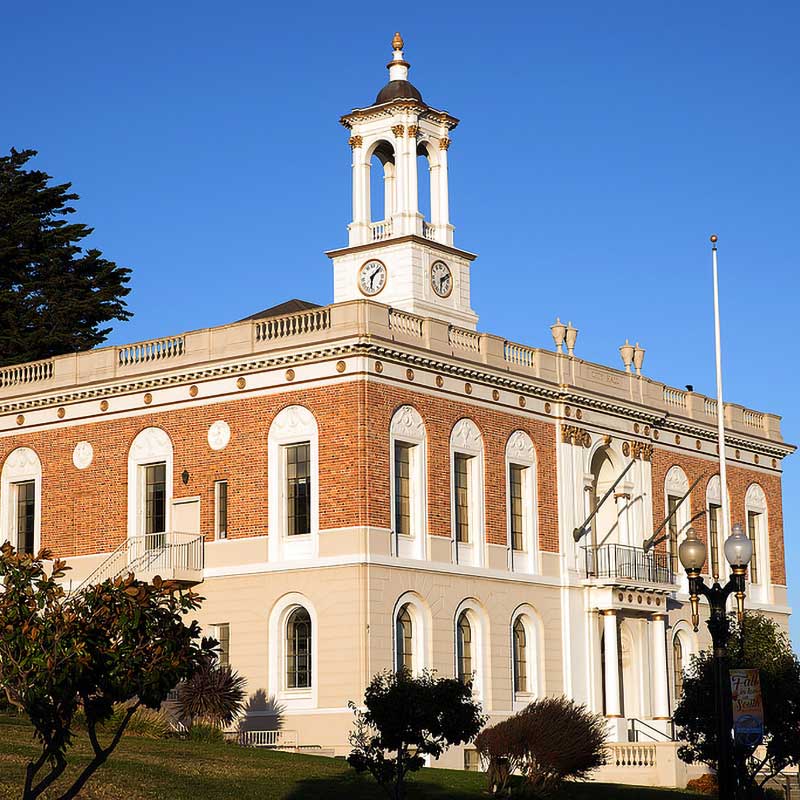Original article - Somm Essentials: Exercising our palates at San Francisco Wine School by William Cavanagh / photos by Andria Lo
With one sniff, M. turns up her nose. “Smells like a fish tank.”
I’d have said mineral, seashell, with some green apple thrown in. And briny oyster. But “fish tank?” That stopped me in my tracks.
This telling exercise is part of what we do, twice a day for two weeks, in San Francisco Wine School’s Somm Essentials course. Under the guidance of San Francisco Wine School founder David Glancy MS, CWE; Catherine Fallis MS; and Brian Cronin MS, our group of very capable students spent two packed weeks gathered around tables with wine glasses a-plenty, preparing for sommelier duties and exams and Society of Wine Educators’ Hospitality Beverage Specialist Certificate.
From a heavy concentration on wine and all of its intricacies, to saké and its mysteries, to the complexities of fine coffee and tea services, and food and wine pairings, the master instructors made the vast subject matter approachable and, without a doubt, kindled our passions.
It was the diverse personalities and experience around the table that made this intensive beverage program so fun and compelling. There was a retired firefighter following his wine dream, a woman in the international medical business exploring a potential new career, someone studying for their second level CMS exam, a server from Restaurant Gary Danko in San Francisco and two of us from David Kinch’s Manresa Restaurant in Los Gatos. This diversity led to lively exchanges, especially when it came to vocabulary.  I currently work as a Captain at Manresa and was sent to Somm Essentials by the restaurant while it was being rebuilt after a fire, continuing my professional development during that time off. At Manresa and over the course of my 20-plus-year career, I have learned from people with exceptional experience and talent. But the comments around the table that first day had me reevaluating the way I look at wine.
I currently work as a Captain at Manresa and was sent to Somm Essentials by the restaurant while it was being rebuilt after a fire, continuing my professional development during that time off. At Manresa and over the course of my 20-plus-year career, I have learned from people with exceptional experience and talent. But the comments around the table that first day had me reevaluating the way I look at wine.
Often in play during the program were typical wine descriptors like Meyer lemon, toasty oak, hazelnut, and all variety of berries, apples and citrus. Although we were often referring to the same flavor or aromatic, we had different reference points that we brought to the discussion. This speaks volumes about the past experiences that we each drew on, taste memories that are often elusive and very personal. These exercises and the guidance of our instructors helped us establish a common language for communicating about the world of beverage, first with each other and then, more significantly, with our customers.
All of our instructors were Master Sommeliers, each with a wealth of experience and a passion for the entire beverage spectrum. In addition to the classroom time, discussion and academic homework, they brought us reams of information on wine, spirits, coffee, tea, saké, non-alcoholic beverages, history and health, which they shared in a way that was both accessible and challenging.  Professional standards define a sommelier. In the service portion of the program, we fine-tuned opening Champagne and decanting older wines, then went much deeper. Exercises underlined how important every aspect of service is, from mastering hospitality to closing the sale. A lot of practice goes into making that look easy.
Professional standards define a sommelier. In the service portion of the program, we fine-tuned opening Champagne and decanting older wines, then went much deeper. Exercises underlined how important every aspect of service is, from mastering hospitality to closing the sale. A lot of practice goes into making that look easy.
By far the most demanding exercise, though, was the food and wine pairing lab: six different foods, six different wines, 36 possible combinations. That resulted in some beautiful matches, and some that were face-contorting. A 2011 Morgon from Joseph Drouhin paired perfectly with a sauté of wild mushrooms, for example, but was an absolute train wreck with steamed baby asparagus. Niepoort Ruby Port with smoked salmon should probably be outlawed, but with bittersweet chocolate, one classmate exclaimed, "It went boom!"
Rules only go so far. You can’t fully understand good pairings until you’ve tasted bad ones.
“Sommeliers and service staff who take the time to educate themselves on a wine or beverage—its history, cultural identity, and gastronomical uses—can better share an experience with our guests,” noted Manresa’s Beverage Director, Jim Rollston.
It’s true, the beverage world is anything but static, and it’s crucial we stay on top of it. Although Manresa offers an innovative and comprehensive program, my dive into San Francisco Wine School’s Somm Essentials offered a view of the beverage world that was even more detailed and far-reaching.
As I write this, I’m thinking back to that first, challenging glass of wine—it turned out to be a 2012 Petit Chablis from Hervé Azo. I learned and relearned during this course that we need to pay attention to what we taste, but also be aware that what we’re experiencing may not be what others do. And that is what makes it fun.
It’s that fun, that passion for the infinite array of beverages and flavors available, which drives me to know, to learn and to serve, and I appreciate learning from others who have both the industry experience and the ability to teach. That makes me better at what I do, and propels my love of the wine world even higher.
My next passion? To dive into the intricacies of Italian wine. I think they have a program for that, too.
Learn more about the Somm Essentials program and see if it's right for you.



